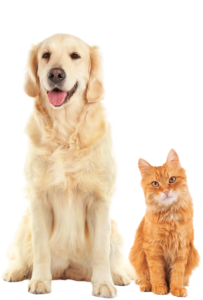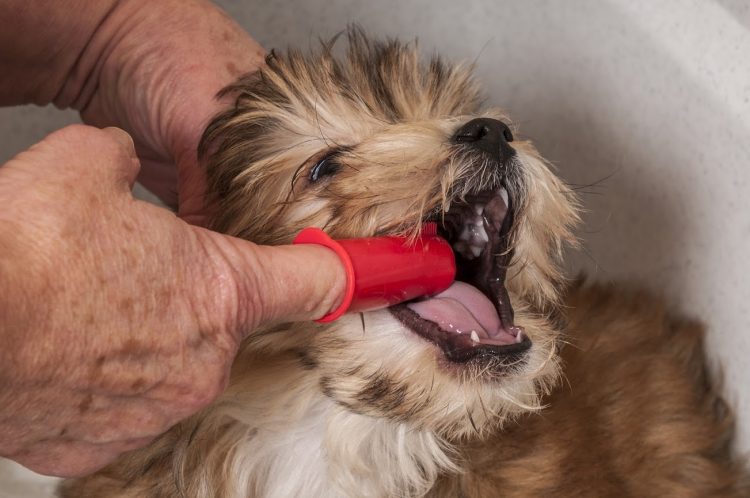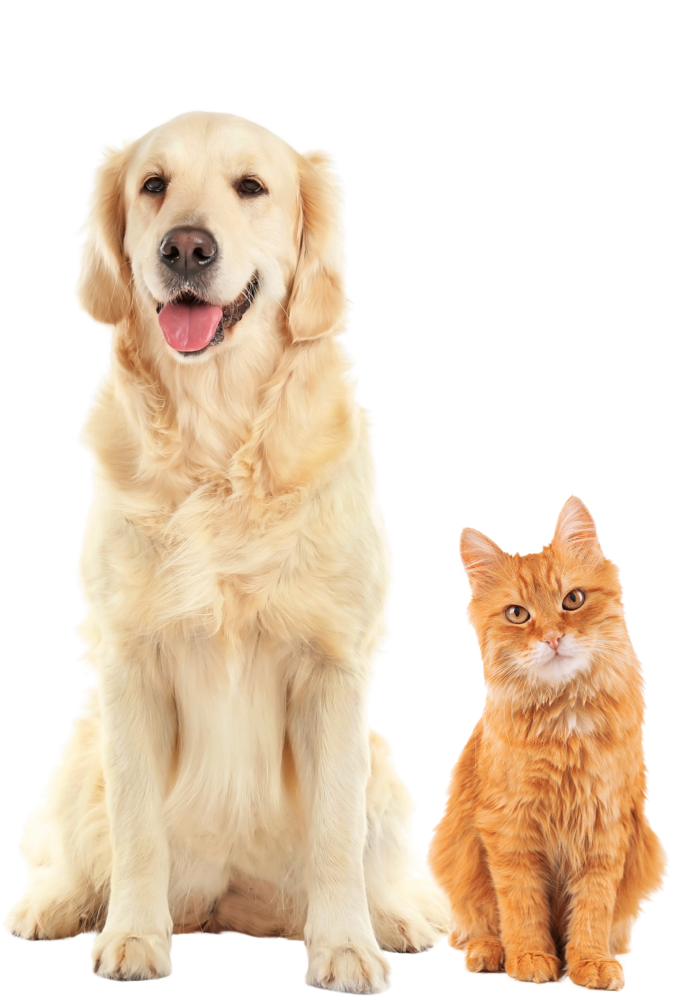Bad breath is a common presenting pet odor complaint. Common causes may be related to the mouth or rarely, other health problems.
The most common cause of halitosis is periodontal disease caused by plaque (bacteria), which attaches to the tooth surface within hours of cleaning the teeth. Within days the plaque becomes mineralized producing calculus. The best way to prevent periodontal disease is to brush your dog’s teeth.
Common Question: “How often should I brush my dog’s teeth?”
Ideally you should be brushing your dog’s teeth twice daily if you can manage it but once a day is a great start. Brushing removes the daily accumulation of plaque from the teeth. Even though dogs do not commonly get cavities they do suffer from periodontal disease which can lead to bad breath, pain and tooth loss.
Common Question: “How do I properly brush my dog’s teeth?”
Start with an appropriate tooth brush. Ideally for dogs less than 30lbs, a finger tooth brush works well. For larger dogs, buy one with a long handle and an angled head to better fit the mouth and extra soft bristles. Place the toothpaste between the bristles which allows it to spend the most time next to the teeth and gums. Most dogs accept brushing if they are approached in a gentle manner. Start slowly with a damp cloth or gauze wiping the teeth and progress to a tooth brush soaked in warm water. Eventually add on toothpaste. Many tooth pastes designed for pets are flavored, so starting by allowing your dog to lick a small amount off your finger to get used to the taste is a great way to introduce toothpaste and helps to make the tooth brushing experience a positive one. Be sure to use lots of praise and if necessary dental friendly treats as a reward. Pay most attention to the outside of the upper teeth. The bristles should be at a 45 degree angle to the gum line. Move the tooth brush back and forth in an oval pattern including the space between the teeth.
Common Question: “Can I use human toothpaste?”
Most human pastes contain fluoride in high enough concentrations that if swallowed daily would be toxic. Most human tooth pastes do not taste good to animals. Since human tooth pastes are not intended to be swallowed (by humans or pets) and since pets will swallow (not rinse and spit), they are not recommended for use in pets.
Tooth brushing is the number one preventative measure in the fight against periodontal disease. In combination with an appropriate diet and dental treats, tooth brushing helps maintain oral health and can help to prevent the need for more invasive measures such as subgingival scaling and extractions.
If you need some advice on home dental care and diet recommendations, visit us at the Van Isle Veterinary Hospital, we would be happy to give some friendly pointers. Give us a call at 250.334.8400.
Written by Van Isle Veterinary Hospital




